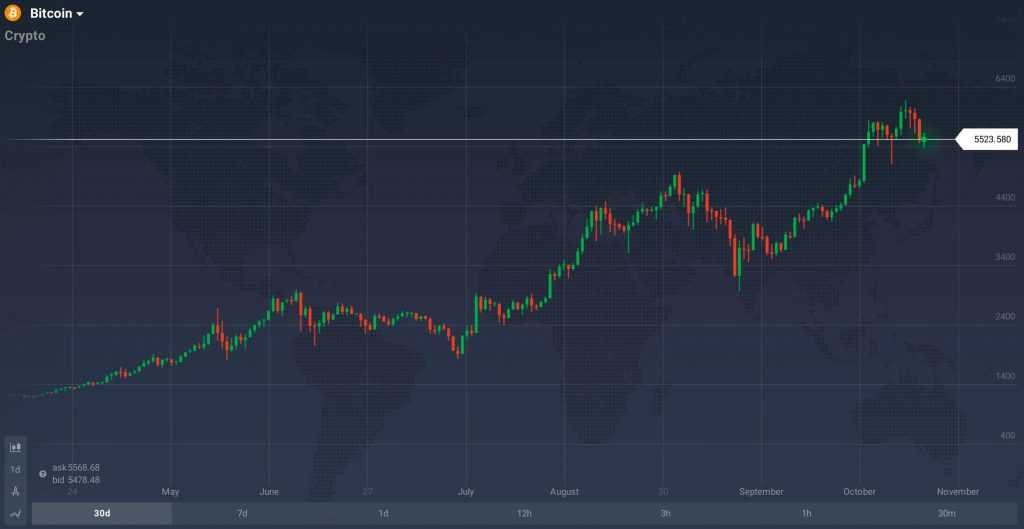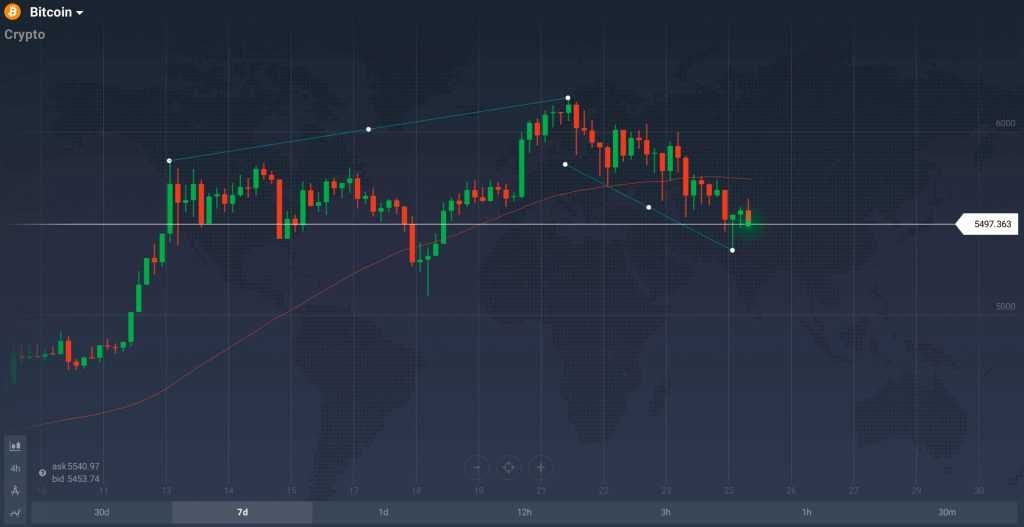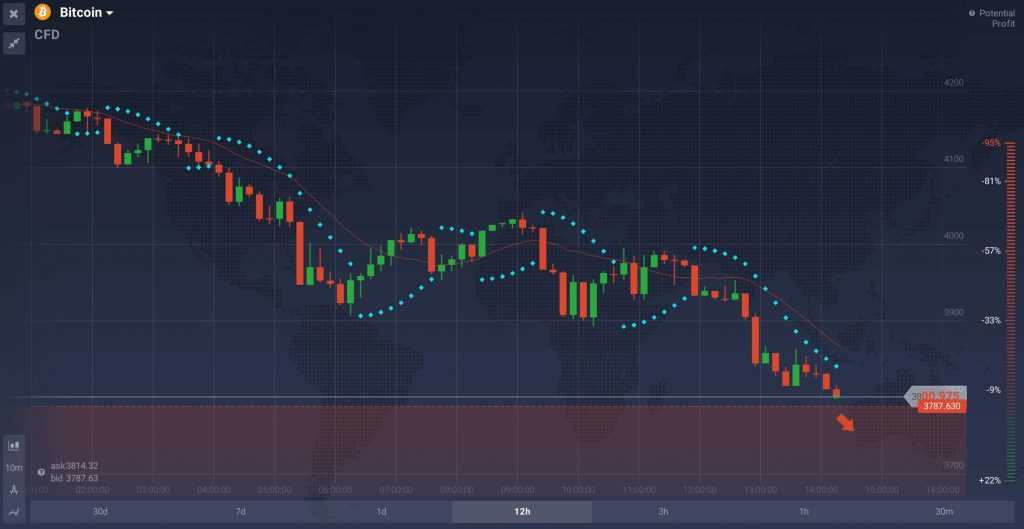Bitcoin is the world’s first and most popular cryptocurrency. With a market capitalisation of over $65 billion, it constitutes 47% of the global cryptocurrency market and totally dominates the scene. Bitcoin trading drew the attention of both professional investors and the general public alike after surging 800% in a matter of only one year.
When working with IQ Option platform, traders can choose from three BTC/USD instruments. All three offer ultimate trading experience but should be used differently depending on the long-term/short-term orientation and your personal trading style.

Bitcoin purchase
Cryptocurrency purchase is the first and the most obvious choice. The strategy in this case is as simple as that: buy (or short sell) Bitcoin and keep the position open long enough to cover the spread and make reasonable profit. This instrument is similar to Forex trading and online cryptocurrency exchanges. The trader is supposed to buy the cryptocurrency if he believes the price of BTC will increase over time, and short sell it if the price of the asset can be expected to deteriorate.

No multiplier is available for cryptocurrency purchase, thus making it harder to lose an entire investment capital in just one deal. One’s earnings will depend on the difference between the opening and closing prices. The further the Bitcoin price has moved from its initial position, the higher the profit. Certain analysts believe that due to higher spreads the cryptocurrency purchase is best suited for long-term deals.
Bitcoin CFD
Cryptocurrency-based contracts for difference represent another viable option. Instead of buying the cryptocurrency itself, you as a trader purchase the contract. In accordance with the it, the investor will receive the difference between the current and the future prices of Bitcoin. As in the the previous case, the greater the difference, the higher is your profit margin.

Despite superficial similarity, CFDs and cryptocurrency purchases work differently. As always in trading, the difference is in the details. CFDs allow for short-term deals due to lower spreads. Contracts for difference do not require substantial price swings in order to remain net positive. In case of CFDs, traders have access to the multiplier. The latter works as a loan, letting the trader borrow money for a period of one trade. It can be used to control bigger positions than the trader can offord. It is worth mentioning that both profitability and the potential risk are multiplied.
Whatever tool you choose, trading possibilities are numerous. Each strategy has advantages of its own and should be used with a clear goal in mind.

